With the RTX 3080 as the introduction to Nvidia's new generation of video cards, we saw what the next wave of high-end cards is capable of. Relatively speaking, the RTX 3080 offers an intriguing value proposition for enthusiast-level performance at $700 USD MSRP (if you can even find one), outclassing any video card that came before it. But not everyone needs or wants to go for the high-end and, as is tradition, Nvidia likes to roll out lower-spec SKUs over time--so now, we have the RTX 3070, which is a truly impressive card in its own right.
Nvidia has touted the RTX 3070 as performing around the same as the RTX 2080 Ti, which was last generation's top-tier consumer-level video card. And that's largely true based on our results. The RTX 3070 carries a $500 MSRP, which is less than half of what a 2080 Ti goes for, so to get that type of performance at a much more approachable price makes high-end PC gaming less of a pipe dream. Especially when factoring in the growing popularity of RTX ray tracing capabilities and the increasing usage of DLSS as a great alternative to antialiasing, the RTX 3070 makes a strong case for those who are still holding out with GTX 10-series (or older) cards.
For the purposes of this review, Nvidia provided the Founder's Edition of the RTX 3070--keep in mind that board partners' performance and pricing can vary. We followed a similar structure to our RTX 3080 review to keep a consistent comparison between the other Nvidia cards included in our tests, but focused our analysis on how the 3070 fares against the 2080 Ti, given Nvidia's claims of how the 3070 stacks against it.
Technical Details
All the new RTX 30-series video cards fall under the Ampere architecture, which shares a lot in common with the RTX 20-series generation's Turing architecture. It's essentially a beefed-up version of Nvidia's three-pronged approach for graphics processing: streaming multiprocessor (SM), the Tensor core for deep learning and AI-based tech like DLSS, and the RT core dedicated to ray tracing tasks.
Compared to their previous-gen counterparts, Ampere cards pack a higher CUDA core count, GDDR6X memory, higher transistor count, and rate for much higher TFLOPs--though peak power consumption is higher now. At least for the RTX 3070, power requirements aren't as steep as the RTX 3080--Nvidia says you'll need a 650-watt power supply for the 3070, which peaks at 220 watts under load.
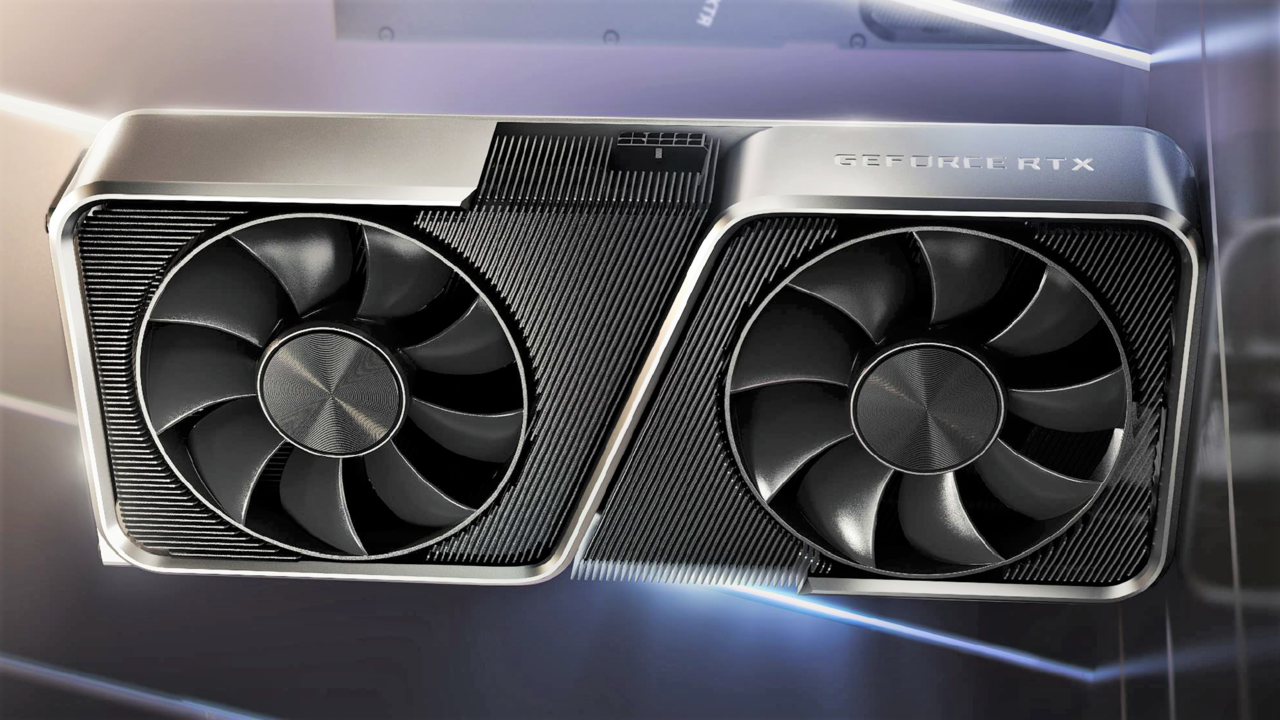
Like the RTX 3080, the RTX 3070 sports a new power pin design; the packaging comes with an adapter so all you really need to power it is one standard 8-pin PCIe power connector. The RTX 3070 Founder's Edition has both cooling fans on the underside of the card; however, you still get the same airflow design with one fan for back-end exhaust and the other to pull air from below and push it upward through the card itself.
You'll get the same ports as the higher-end Ampere cards, too: one HDMI 2.1 and three DisplayPort 1.4a outputs. One difference in design is that the RTX 3070 is a bit more compact--while it's still a dual-slot card, it's quite a bit shorter at 9.5 inches as opposed to the 3080's 11.2 inches. Any standard mid-tower case can fit an RTX 3080, but it can be a tight fit regardless.
While Nvidia has changed the way it lays out the specs for its video cards from generation to generation, below you'll find the more pertinent technical details to see how these cards stack up on paper.
| RTX 3080 | RTX 3070 | RTX 2080 Ti | RTX 2080 | |
|---|---|---|---|---|
| CUDA Cores | 8704 | 5888 | 4352 | 2944 |
| Clock Speed (Boost) | 1710 MHz | 1730 MHz | 1635 MHz | 1515 MHz |
| Memory Speed | 19 Gbps | 14 Gbps | 14 Gbps | 14 Gbps |
| VRAM / Memory | 10 GB GDDR6X | 8 GB GDDR6 | 11 GB GDDR6 | 8 GB GDDR6 |
| Single Precision Perf | 29.7 TFLOPs | 20.3 TFLOPs | 13.4 TFLOPs | 10.1 TFLOPs |
| RT Cores | 68 | 46 | 68 | 46 |
| Tensor Core TFLOPs | 238 | 163 | 114 | 85 |
| TDP (Watts) | 320 W | 220 W | 260 W | 225 W |
| Transistor Count | 28.3 B | 17.4 B | 18.9 B | 18.9 B |
| Launch Price (USD) | $700 | $500 | $1000 ($1200 FE) | $700 ($800 FE) |
Methodology And Test Bench
To test out the RTX 3070, we used the same rig as with our previous RTX 3080 review for a test bench. While we've had access to limited resources working from home amid the current conditions of the pandemic in the United States, we managed to put together a decent machine to work. It includes the following specs:
- MSI Mag Z490 Tomahawk motherboard
- Intel Core i7-10700 (non-K) 8-core/16-thread CPU clocked at 4.7GHz
- Corsair H100i AIO Liquid Cooler
- 16GB (2x8GB dual-channel) Corsair Vengeance DDR4-3000 RAM
- Samsung 960 Pro 512GB NVMe SSD
- Seasonic Prime 1000W (80 Plus Platinum) PSU
We included a total of four video cards in our tests: the RTX 3070 (of course), RTX 3080, RTX 2080 Ti, and RTX 2080. Results from the RTX 3070 reflect using the GeForce Game Ready 456.56 driver, while the other three cards were tested using the Game Ready 456.16 driver.
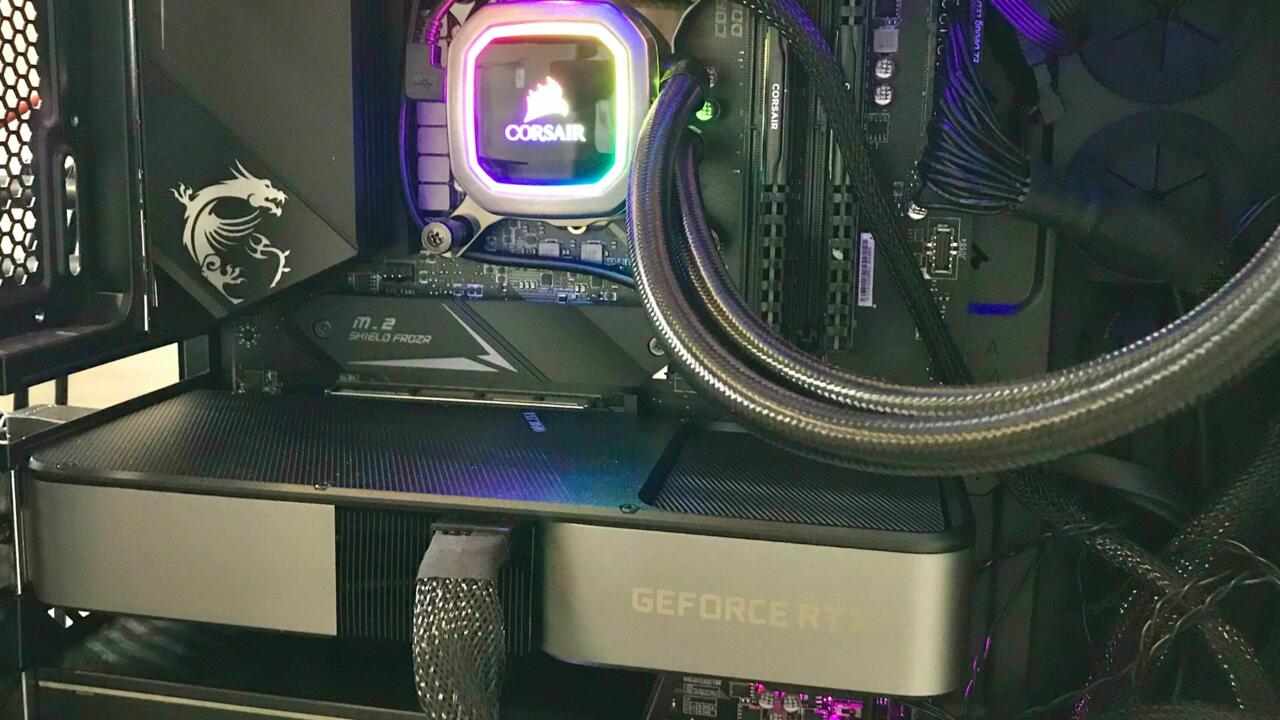
Our tests included benchmarks from the same set of 10 games to compare and contrast the performance results for all four video cards: Metro Exodus, Control, Shadow of the Tomb Raider, Wolfenstein: Youngblood, Final Fantasy XV, Final Fantasy XIV: Shadowbringers, Red Dead Redemption 2, Assassin's Creed Odyssey, Horizon Zero Dawn, and Forza Horizon 4. This samples a decent variety of games with varying degrees of hardware demand--some are great showcases for RTX ray tracing eye candy and DLSS boosts while others provide comparisons for raw performance metrics.
The focus of this review is on in-game performance with maximum graphics settings at both 4K (3840x2160) and 1440p (2560x1440) resolutions. If Nvidia graphics features were available, like ray tracing and DLSS, we turned them on to show what these cards can do with the bells and whistles they offer. Performance for each card was either measured in average FPS or a total score calculated by the game's benchmark tools (except for Control, which was done using FRAPS), and results were examined relative to other cards. Exact performance will vary from one user to another, and while we pushed the cards as far as games let us, remember that you can always adjust graphics options to improve FPS output and tweak visuals to your liking.
Benchmark Results
Metro Exodus
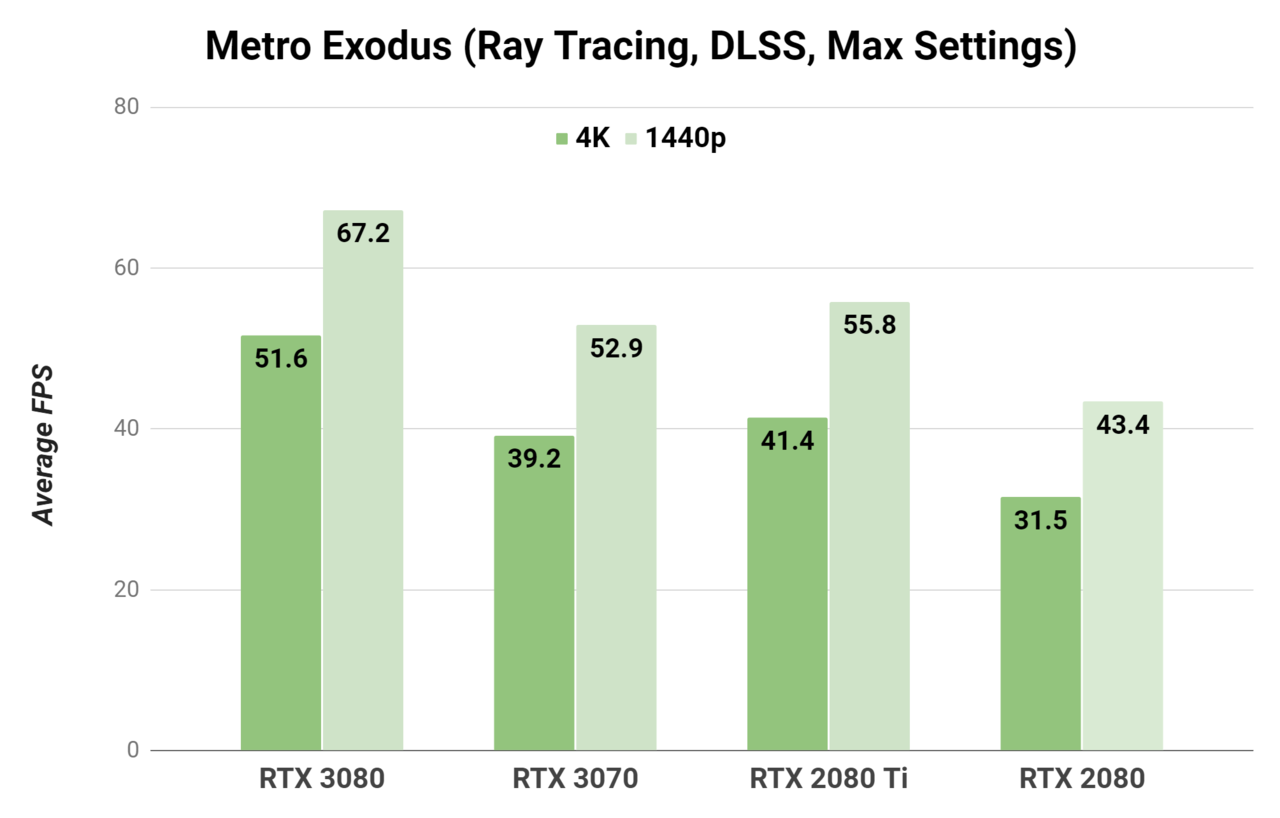
Metro Exodus pushes video cards to their limits and is one of the better showcases of RTX ray tracing. The game has a built-in benchmark that provides a good stress test, and with it we cranked ray tracing to its max but also used DLSS.
At 4K, the RTX 3070 got an average frame rate of 39.2 FPS, so very slightly behind the RTX 2080 Ti, which got 41.4 FPS--a difference of 5.3%. Compared to its more powerful 3080 counterpart, the RTX 3070 trails by about 24%. At 1440p, the 3070 hits a solid 52.9 FPS average, trailing the 2080 Ti by 5.2% and the 3080 by 21.3%.
Control
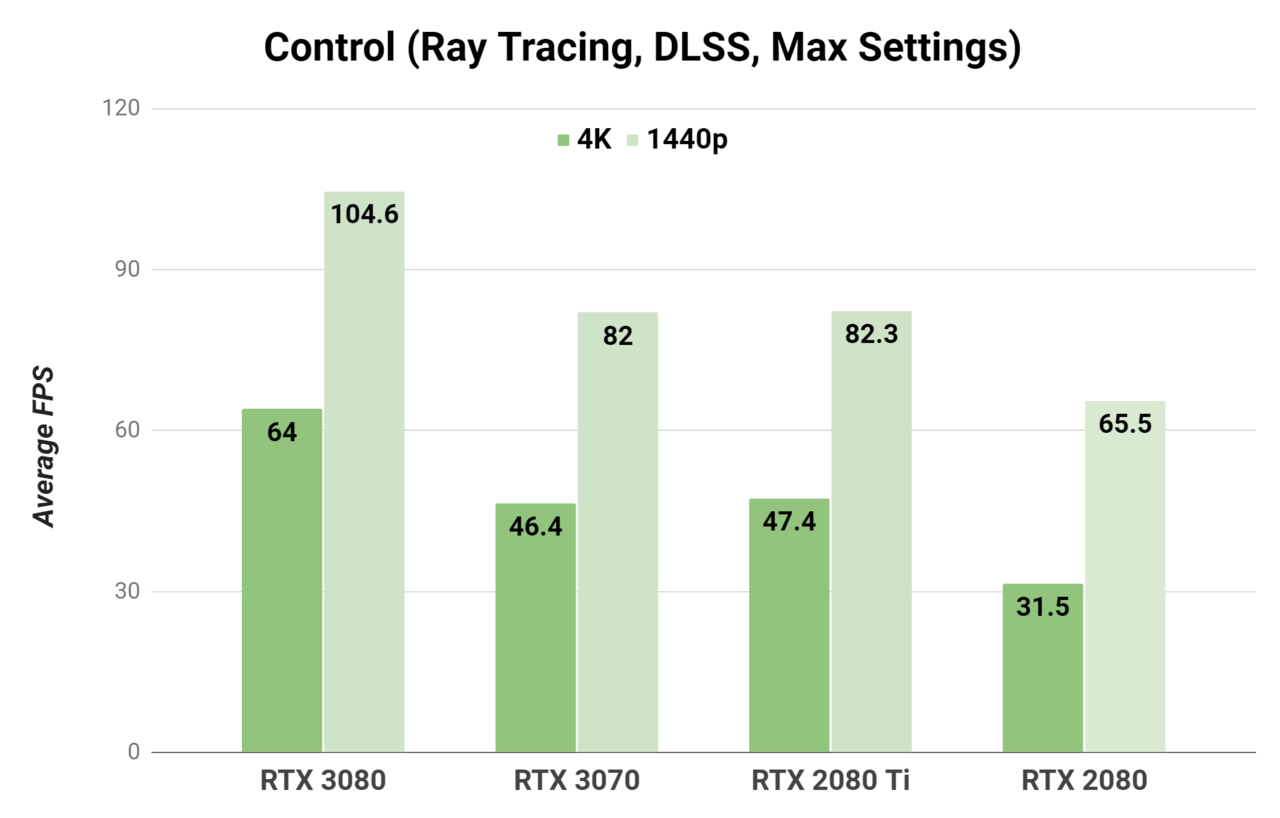
Control is one of the marquee games Nvidia's been using to show off its graphics tech, and for good reason, offering full ray tracing options and DLSS keep up frame rate and maintain image quality. Since there is no in-game benchmark, we created our own gameplay sequence to gauge performance and used FRAPS to get our numbers.
When running 4K, the RTX 3070 got an average of 46.4 FPS, which is just one frame behind the RTX 2080 Ti's 47.4 FPS--a tiny trail of 2.1% to be exact. And our new card is behind the RTX 3080's 64 FPS by 27.5%. Switching to 1440p, there's virtually no difference in performance between the 3070 and 2080 Ti (hitting 82 FPS and 82.3 FPS averages)--that puts the 3070 at 21.6% behind the 3080.
Shadow of the Tomb Raider
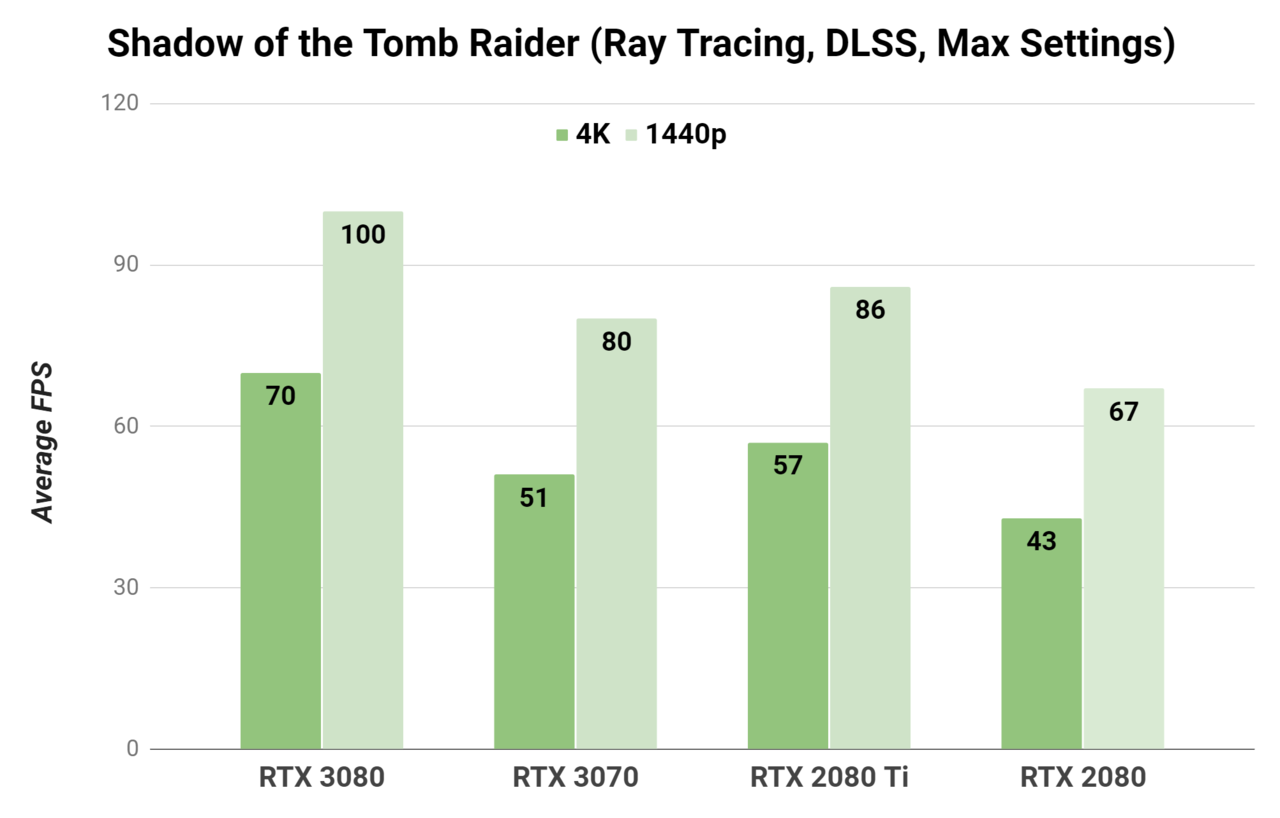
Shadow of the Tomb Raider is another Nvidia graphics showcase with vast environments to flex ray tracing but also put DLSS to good use (and a handy in-game benchmark).
At 4K, the RTX 3070 was able to hit an average of 51 FPS, slightly trailing the RTX 2080 Ti's 57 FPS by 10.5% and the RTX 3080's 70 FPS average by 27.1%. And at 1440p, the 3070 got an 80 FPS average, which is about 7% behind the 2080 Ti and 20% behind the 3080.
Wolfenstein Youngblood
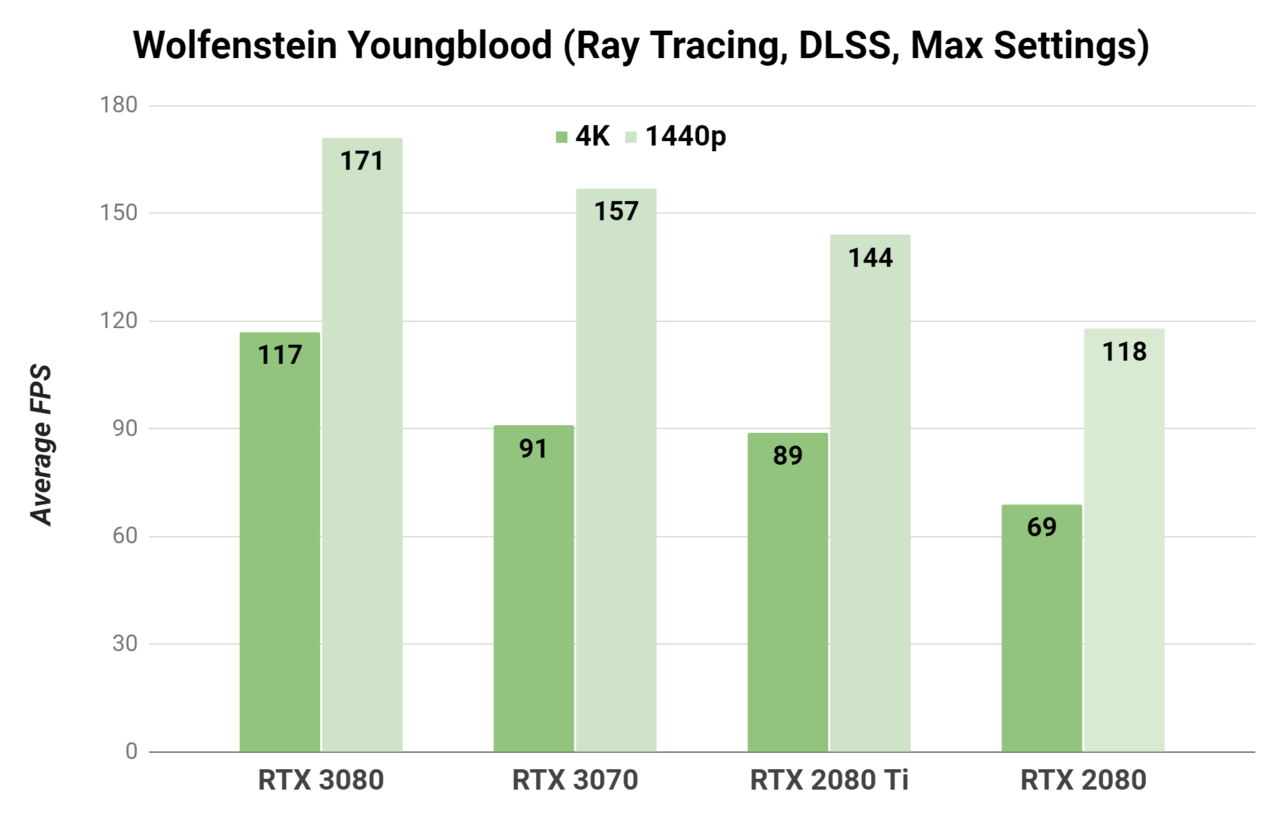
While Wolfenstein Youngblood isn't going to blow you away visually, it's still a good showcase of what the idTech 6 engine is capable of, especially when you throw ray tracing into the mix and use DLSS to boost performance.
Here at 4K, the RTX 3070 pulls slightly ahead with 91 FPS average and overtakes the RTX 2080 Ti's 89 FPS--an improvement of 2.3%. That puts the new card about 22.2% behind the RTX 3080 as well. For 1440p, the 3070 maintains a marginal lead over the 2080 Ti with averages of 157 FPS and 144 FPS, respectively--marking a 9% increase for the 3070. It also trails the RTX 3080 by just 8.2%, but we're likely seeing the game get CPU bound at this point.
Final Fantasy XV
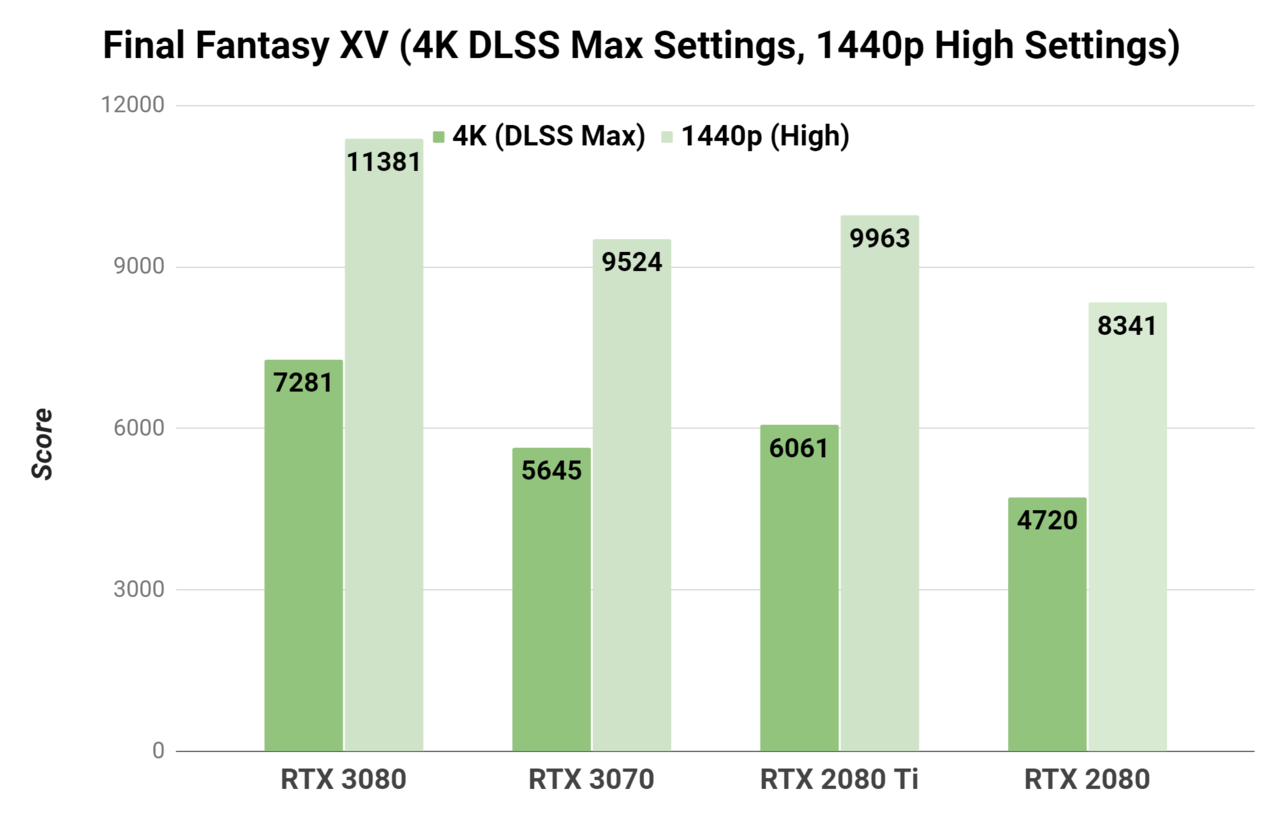
Final Fantasy XV has a free robust benchmark that's also a decent stress test for video cards. While the game may not have ray tracing, it does sport DLSS, and this six-minute multi-part benchmark contains a good amount of action.
At 4K, the RTX 3070 scored 5645, which is about 6.9% behind the RTX 2080 Ti's score of 6061 and 22.5% behind that RTX 3080's score of 7281. When going to 1440p, Final Fantasy XV does not allow for DLSS, so the results reflect performance when using the "High settings" preset. The gap closes slightly with the RTX 3070 scoring 9524, just trailing the 2080 Ti by 4.4% and the 3080 by 16.3%.
Final Fantasy XIV: Shadowbringers
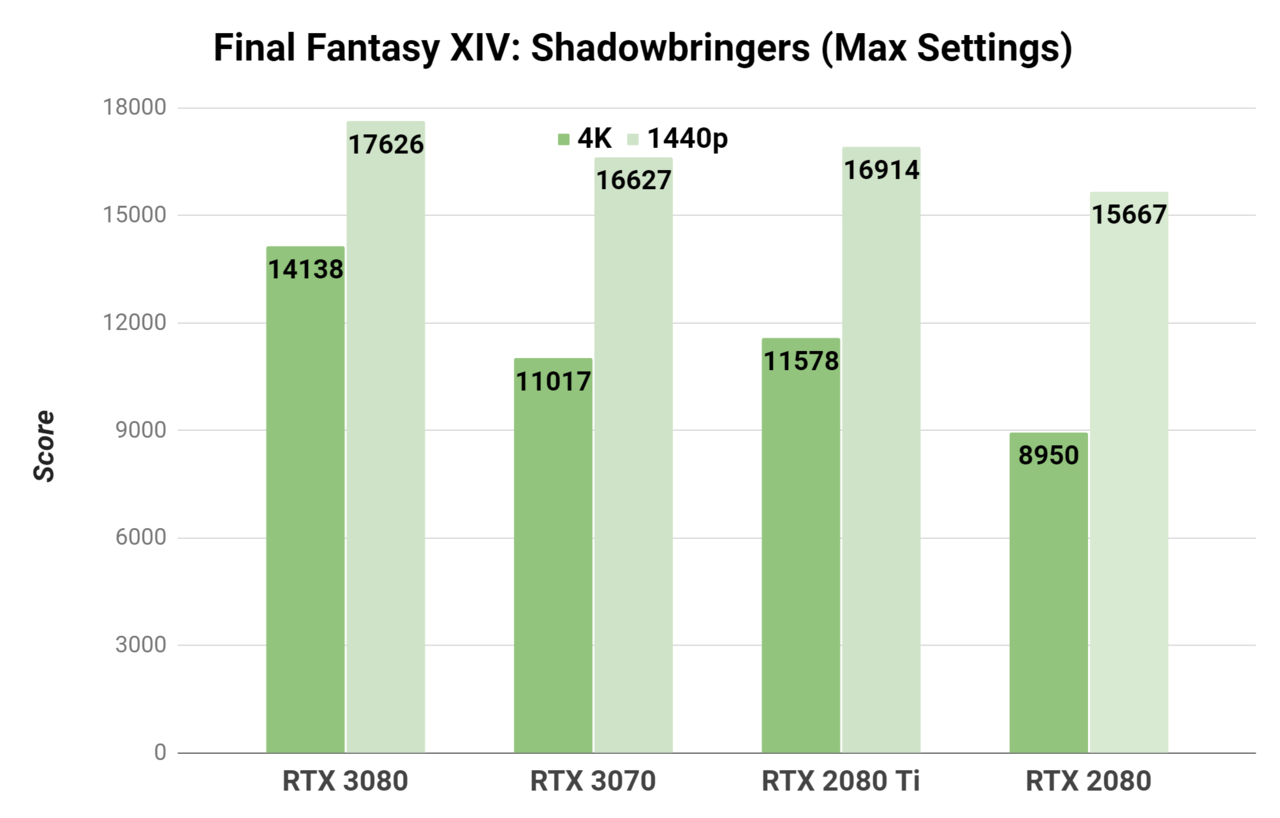
FFXIV isn't exactly graphically demanding, but it is the hottest MMORPG (or RPG for that matter) on the block. It's also a good showcase of how games running lower-spec tech may or may not benefit from better GPUs.
When running 4K, the RTX 3070 and 2080 Ti are practically neck and neck, scoring 11017 and 11578 respectively, with the newer card trailing by only 4.8%. That puts our new card about 22.1% behind the RTX 3080's score of 14138. FFXIV becomes noticeably CPU bound at 1440p with results that show all our video cards performing quite close to each other, making the differences negligible.
Red Dead Redemption 2
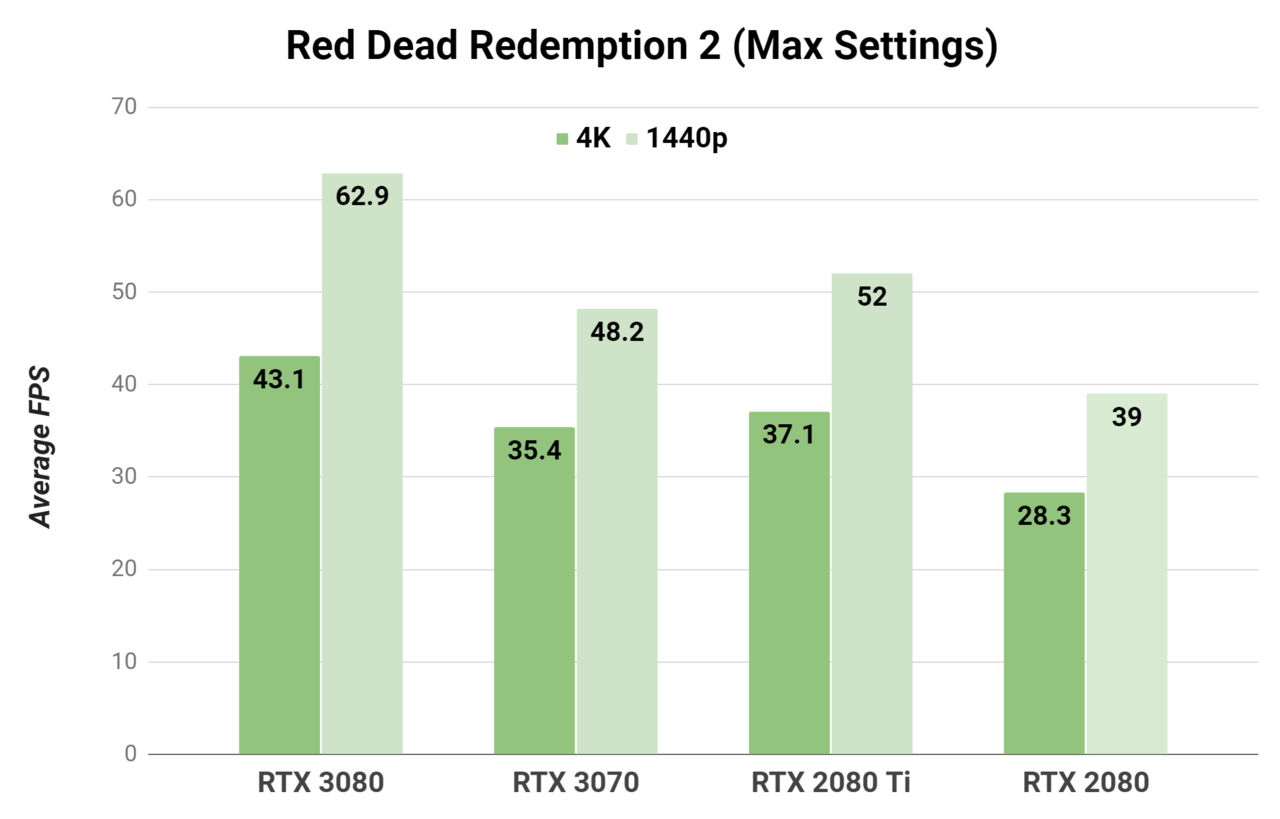
Red Dead Redemption 2 has the potential to push PC hardware pretty hard, especially if you max out every single graphics option available. The game will still look great even if you turn some things down, but we cranked everything to their absolute highest setting to see what these cards can really do.
At 4K, the RTX 3070 was able to average 35.4 FPS, trailing the RTX 2080 Ti's 37.1 FPS by just 4.6% and the RTX 3080's 43.1 FPS by 17.9%. Moving to 1440p, the performance gaps widen by just a bit: the 3070 achieved an average of 49.2 FPS while the RTX 2080 Ti and 3080 got 52 FPS and 62.9 FPS--this marks the new card trailing by 5.4% and 21.8% respectively.
Assassin's Creed Odyssey
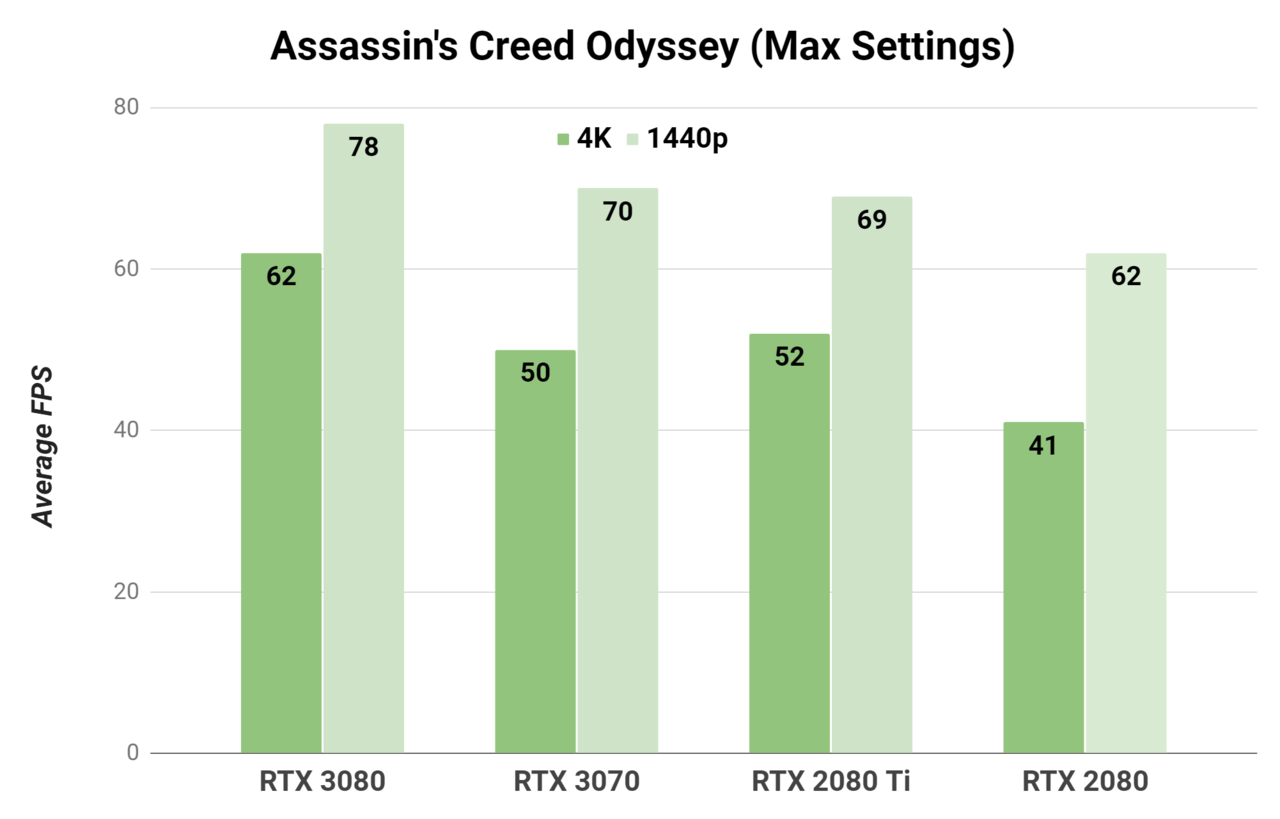
While Assassin's Creed Odyssey is still visually stunning and a great example of a detailed open world, it tends to be heavily CPU-reliant. Regardless, it's important to know how high-end video cards handle the game and impact performance.
At 4K, the RTX 3070 was able to average 50 FPS, which is just 3.8% behind the RTX 2080 Ti's 52 FPS average. This also means the new card trails the RTX 3080's 62 FPS average by 19.4%. When using 1440p, the 3070 and 2080 Ti are neck-and-neck with only one FPS difference between their averages. The 3070 also only trails the 3080 by 10.3%, which speaks to the CPU-bound nature of the game.
Horizon Zero Dawn
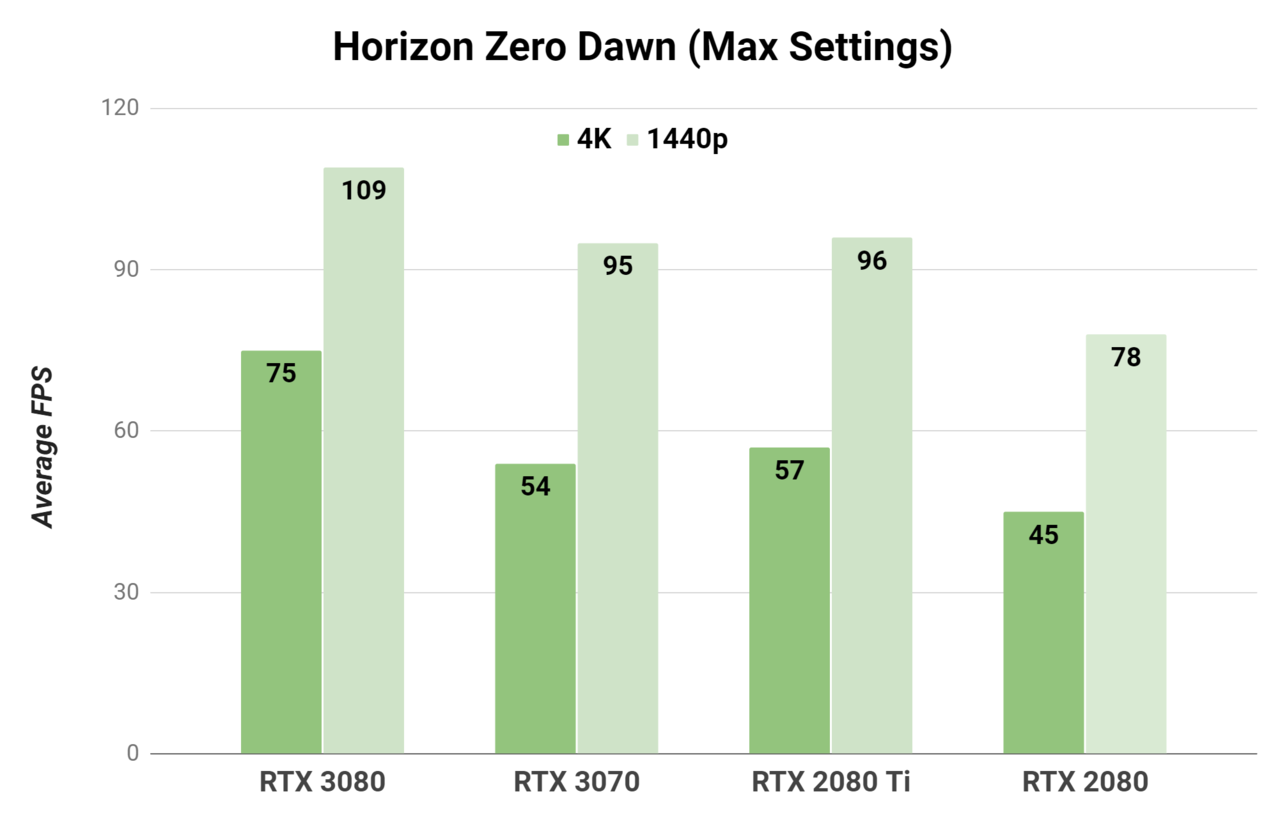
Horizon Zero Dawn's PC port has a few rough patches with bugs and some visual artifacting, though it has seen some improvements. It remains a great graphical showcase when all is working well, and it comes with a nice benchmark tool.
At 4K, the RTX 3070 gets an average of 54 FPS, just a bit behind the RTX 2080 Ti's 57 FPS average by 5.3%. The RTX 3080 still pulls ahead by quite a bit with a 28% increase over the 3070 but the gap closes when going to 1440p resolution. There's only a one-frame difference between the 3070 and 2080 Ti, and our new card trails the 3080 by 12.8%.
Forza Horizon 4
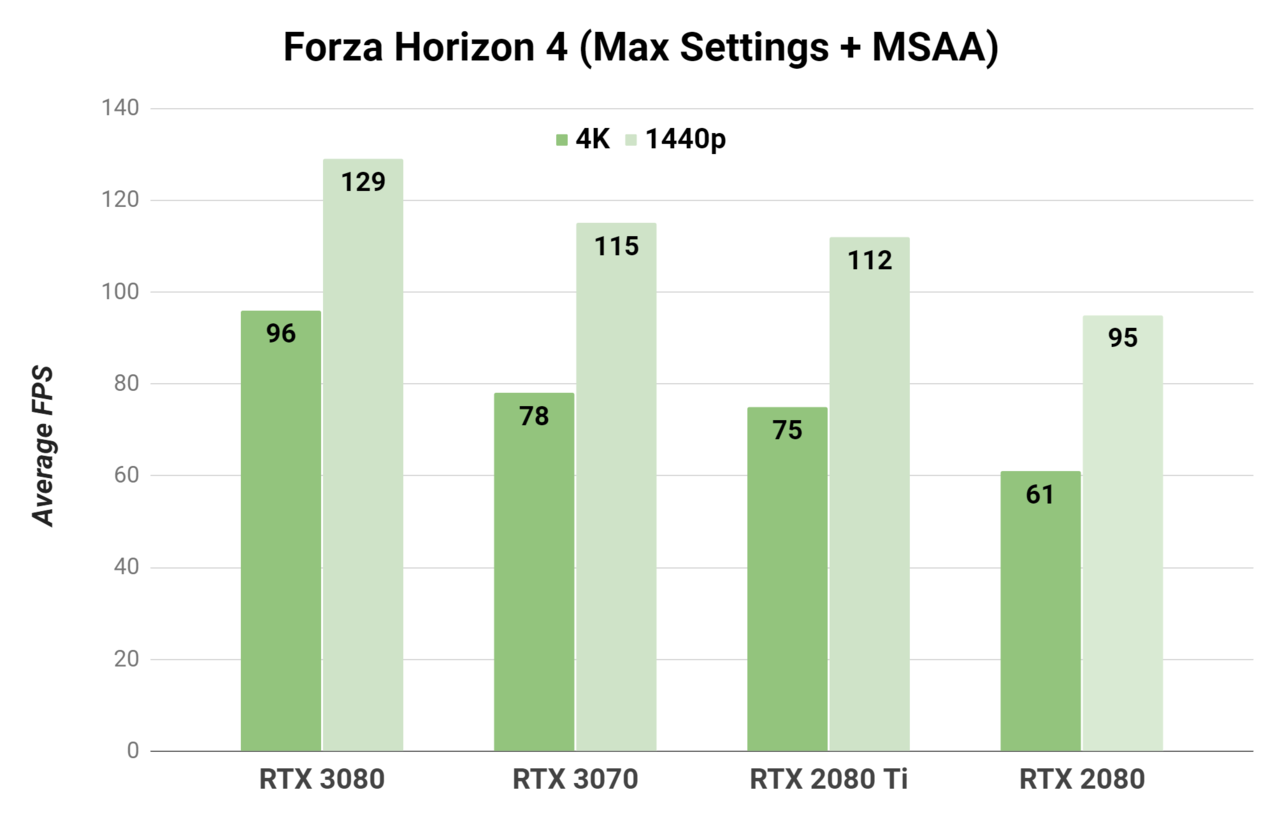
A good racing game is always an easy way to flex visual fidelity, and Forza Horizon 4 is an S-tier example with plenty of graphics options and a detailed benchmark tool. And the game performs wonderfully even with every setting set to their highest possible option.
At 4K, the RTX 3070 is able to overtake the 2080 Ti slightly by averaging 78 FPS, marking a 3 FPS gain and small boost of 4%--the gap between our new card and the RTX 3080's 96 FPS average is about 18.8%. With 1440p, the 3070 maintains its marginal lead over the 2080 Ti (115 FPS vs. 112 FPS), and it closes the gap a bit with the RTX 3080's 129 FPS, behind by only 10.9%.
Ray Tracing's Demand Is DLSS's Opportunity
RTX ray tracing is often touted as the major feature of Nvidia's video cards, and it's genuinely exciting when you see a full application of the tech with super realistic reflections, global illumination, lighting, and shadows. But as we've seen since its implementation, full ray tracing can be quite taxing for even the best RTX cards. Like our RTX 3080 review, we did a little side-by-side comparison to give a glimpse of much ray tracing impacts performance. Here, we used Control as the example to show the impact on the RTX 3070, too.
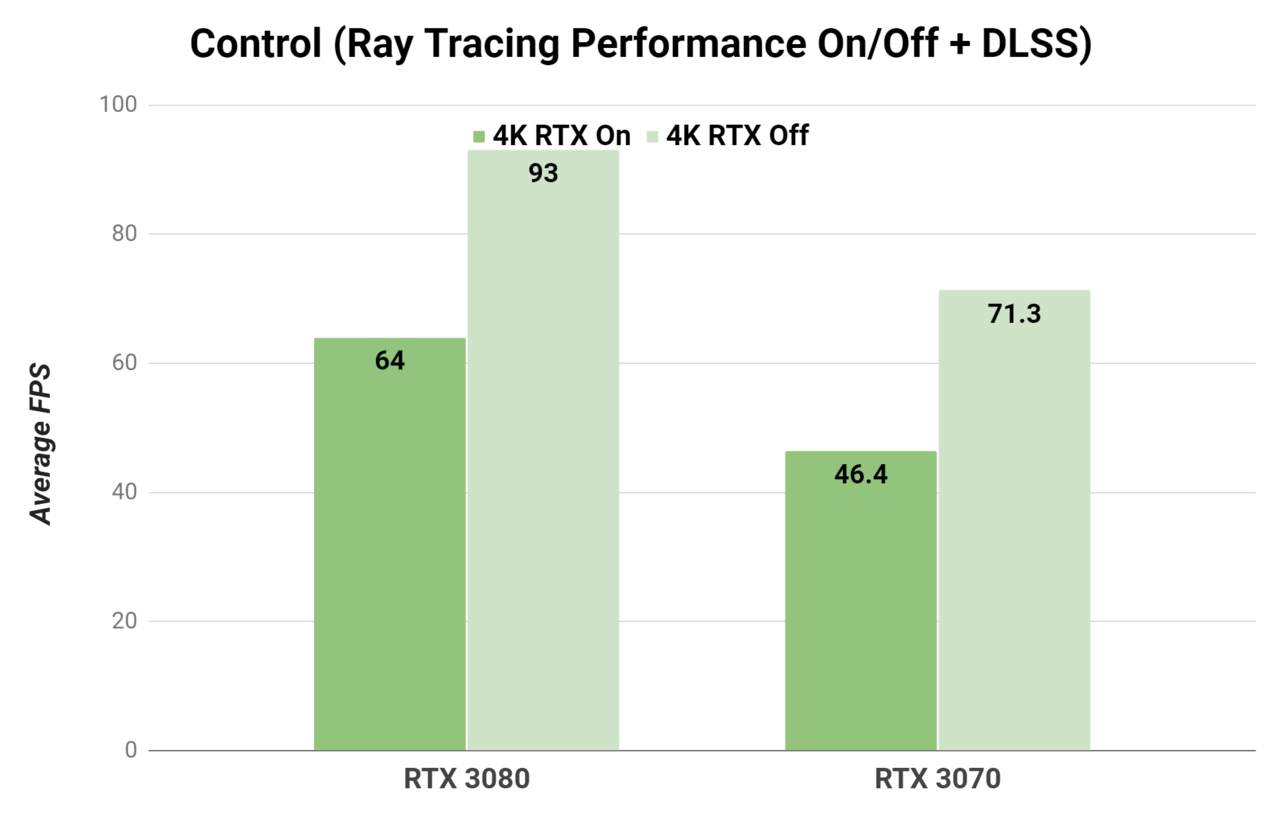
Personally, I find DLSS to be the real show-stopping feature to come along with the RTX cards. For those unfamiliar, DLSS (deep learning supersampling) uses the AI capabilities of the GPU's Tensor core to apply supersampling in real time--meaning, your PC renders the game at a lower resolution, but a higher target resolution is constructed to display the same, if not better, image quality while significantly cutting down on GPU stress. DLSS is what makes 4K with ray tracing even playable, as you can see in the results below.
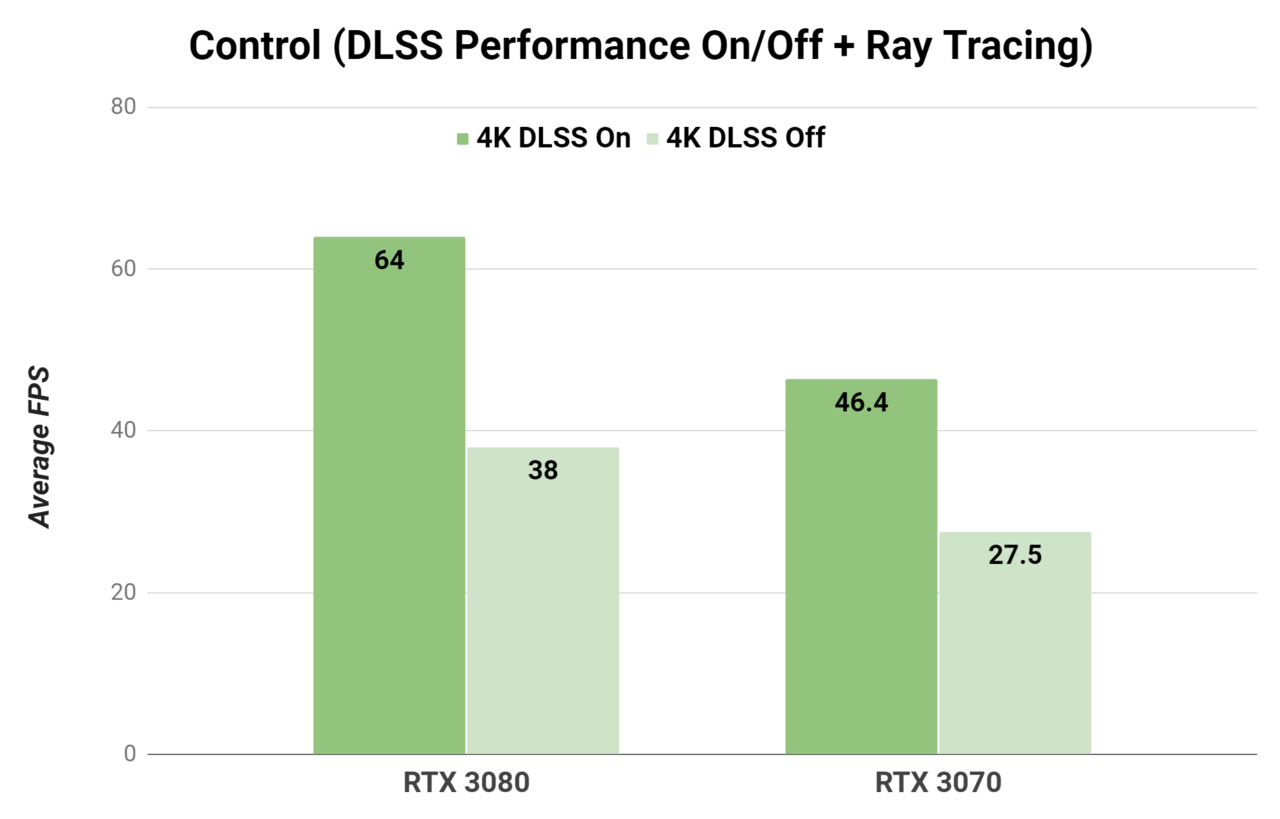
While ray tracing sure looks sweet, I would be okay by turning it down (or off entirely) to recoup the FPS lost if I'm playing at 4K. And of course, I'd prefer to keep DLSS on to maintain high frame rates at 4K. If you want to get an idea of how 4K with DLSS looks compared to native 4K, check out the screenshots below from Control.
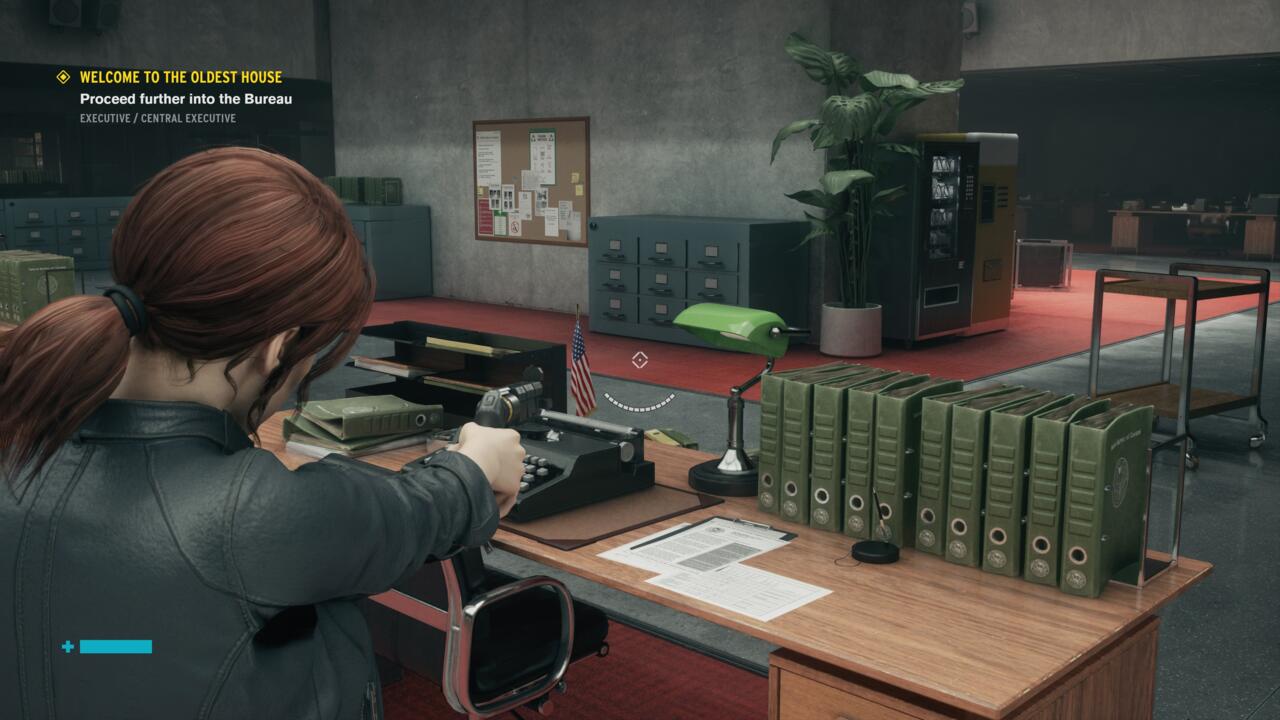
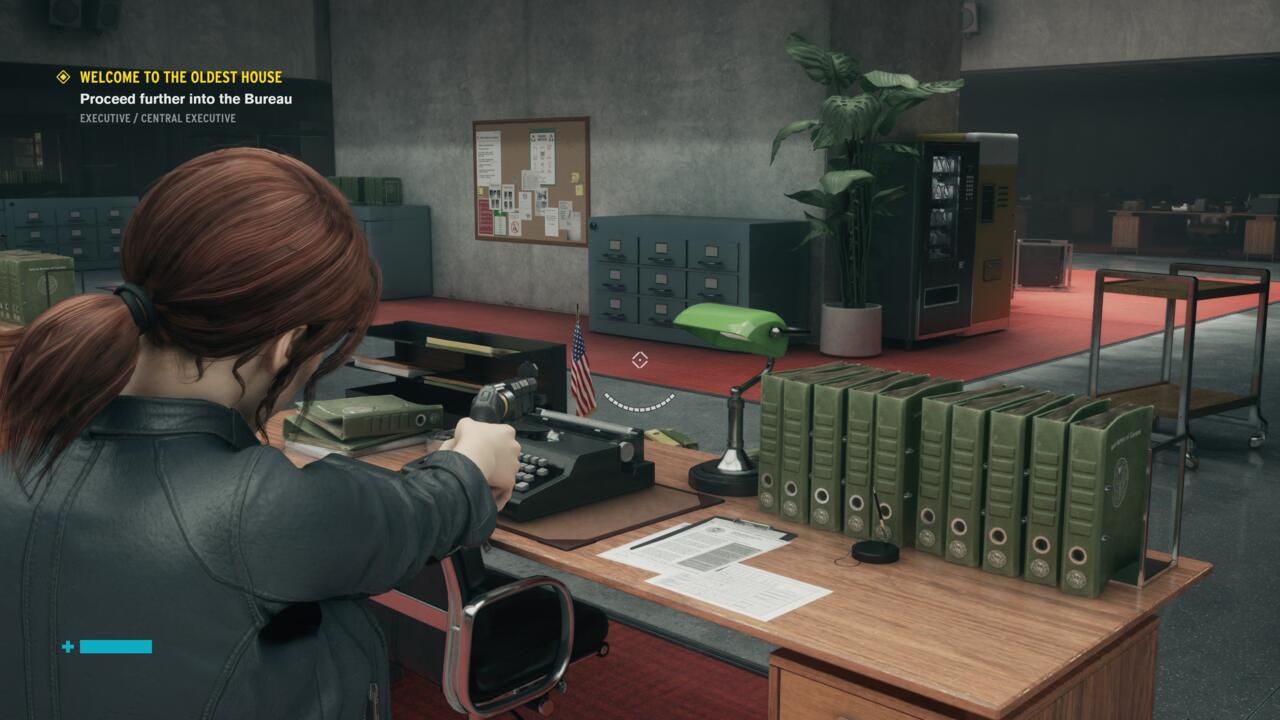
Admittedly, the image with DLSS looks just a tad softer, but the boost in FPS is well-worth it, especially when the action kicks up and things start moving fast.
Heat Check
It seems that the Ampere cards have thermal management on lock, which could be attributed to the new push-pull dual fan design. For the RTX 3070, idle temperature sat at 37 C and peak load temperature never exceeded 76 C after all our testing. It's just a teeny bit hotter than the RTX 3080, which had idle and peak temps of 35 C and 75 C, respectively. These cards are drawing more power than their predecessors yet remain cool under load. For reference, comparison, the RTX 2080 Ti idled around 34 C and peaked at 78 C, while the RTX 2080 would idle at about 33 C and hit peak load temp at 74 C.
| Video Card | Idle Temp | Peak Load Temp |
|---|---|---|
| RTX 3080 | 35 C | 75 C |
| RTX 3070 | 37 C | 76 C |
| RTX 2080 Ti | 34 C | 78 C |
| RTX 2080 | 33 C | 74 C |
Verdict
The idea of a video card carrying a $500 suggested retail price and performing at or close to the RTX 2080 Ti is pretty wild. Even though it trails ever so slightly in most of our tests, it's not by much, and likely wouldn't be all that noticeable when it comes time to the actual gaming experience. There are also a few reasons why we left the RTX 2080 out of the conversation for our comparisons: It's largely phased out and the RTX 3070 outclasses it every step of the way. However, it does indicate the relative improvement in performance that this wave of new Ampere cards can provide.
The RTX 3080 remains impressive as a $700 MSRP card that shows significant leaps over its predecessors, but unless you're aiming for top-notch performance at 4K or trying to squeeze out every frame to make use of a high-refresh rate 1440p display, it might be overkill. That's where the RTX 3070 comes in, making high-end performance somewhat affordable and including all the bells and whistles Nvidia packs with its RTX cards.
With 4K slowly becoming more mainstream (although still not widely adopted), the RTX 3070 can provide playable gaming experiences at that resolution--though a few compromises would be necessary to keep 60 FPS in more demanding games. Otherwise, every modern PC game is going to look and run great with this card, especially when DLSS is implemented.
As great as the RTX 3070 can be, Nvidia hasn't been able to keep up supply with demand, evident in the rough launch of the RTX 3080 and the very limited availability of cards, even from several board partners. Prices may fluctuate and it's hard to tell if many interested buyers will even get their hands on one around launch, given Nvidia's statement about supply not increasing until well into 2021.
If you held out on upgrading to the RTX 20-series, now is a good time to pick up a new video card for high-end performance. Nvidia's claim of having an edge over the RTX 2080 Ti is a bit of a stretch, but it really depends on which metrics and games you're looking at. Regardless, that extra money in your pocket that you've saved by opting for an RTX 3070 instead of an RTX 2080 Ti is going to be a lot more noticeable than the couple of frames you'll miss out on. And overall, the RTX 3070 is a killer video card for its market price.
